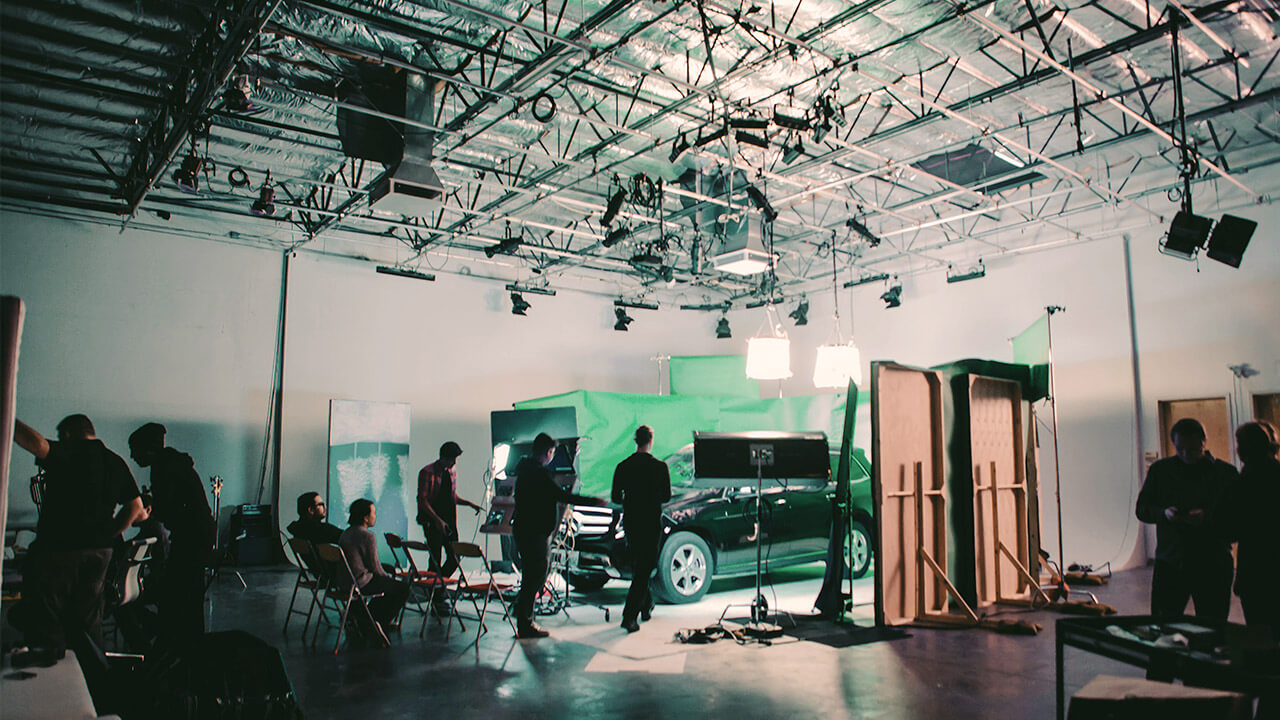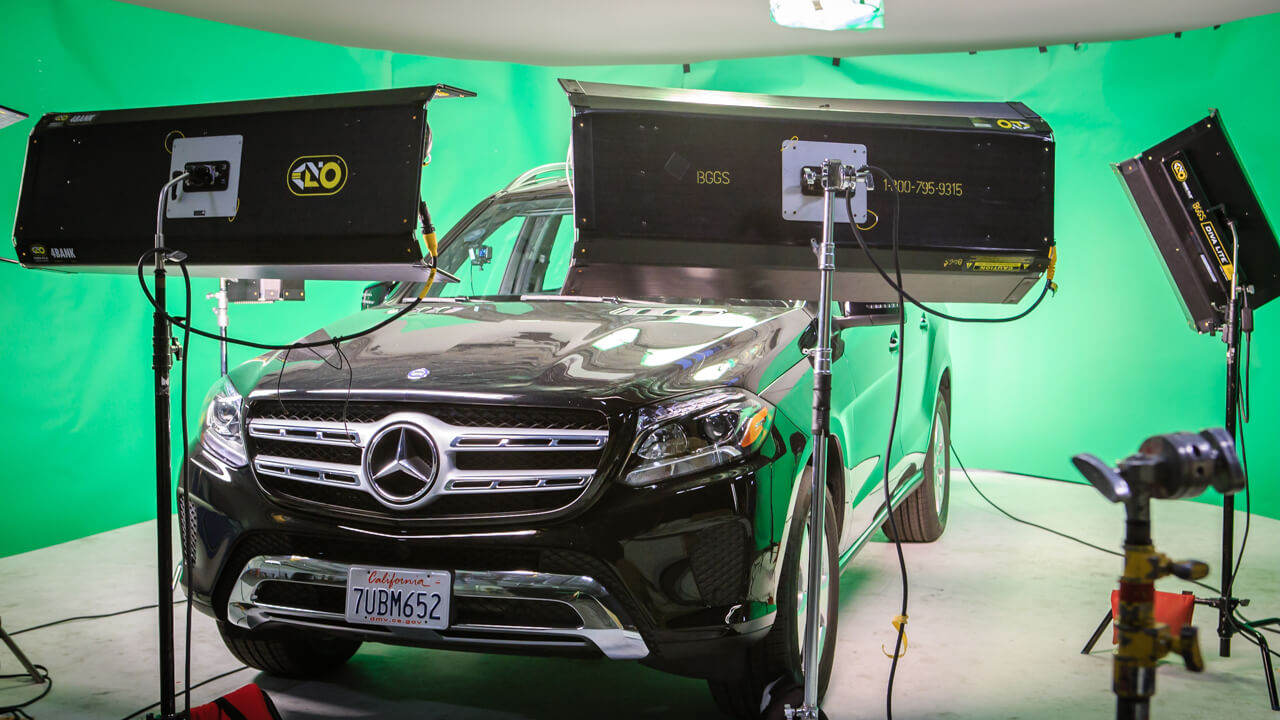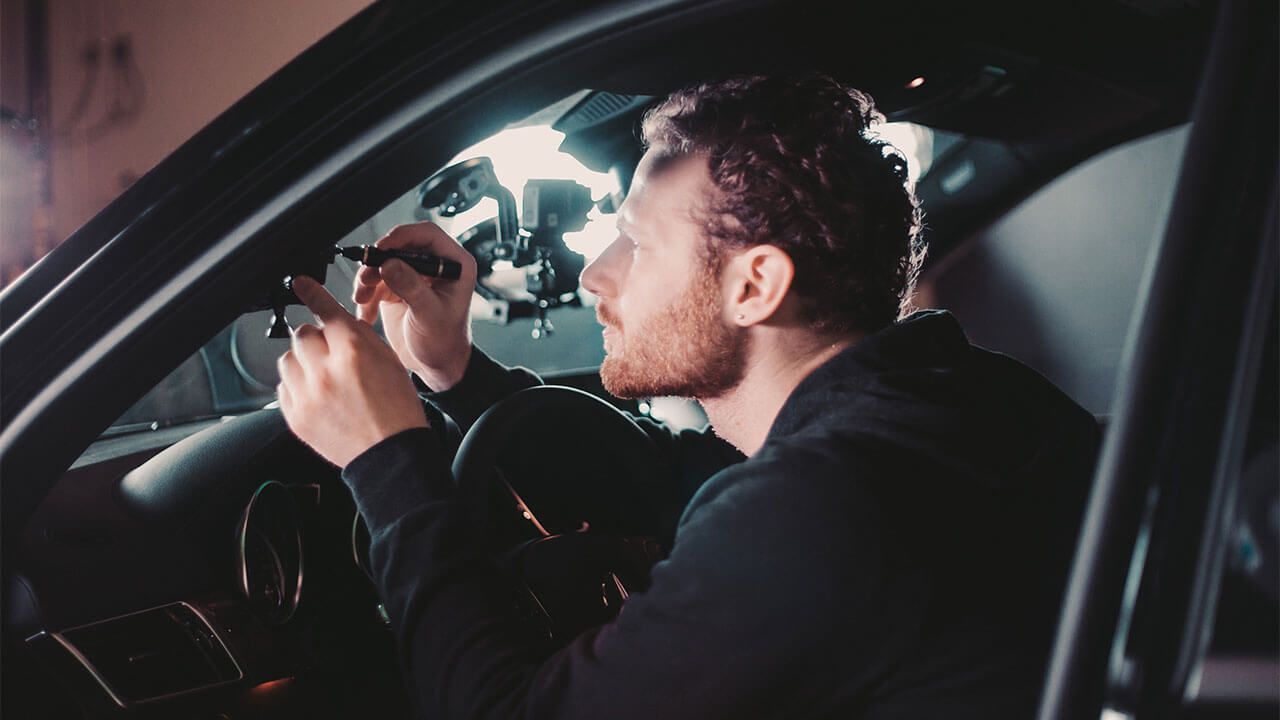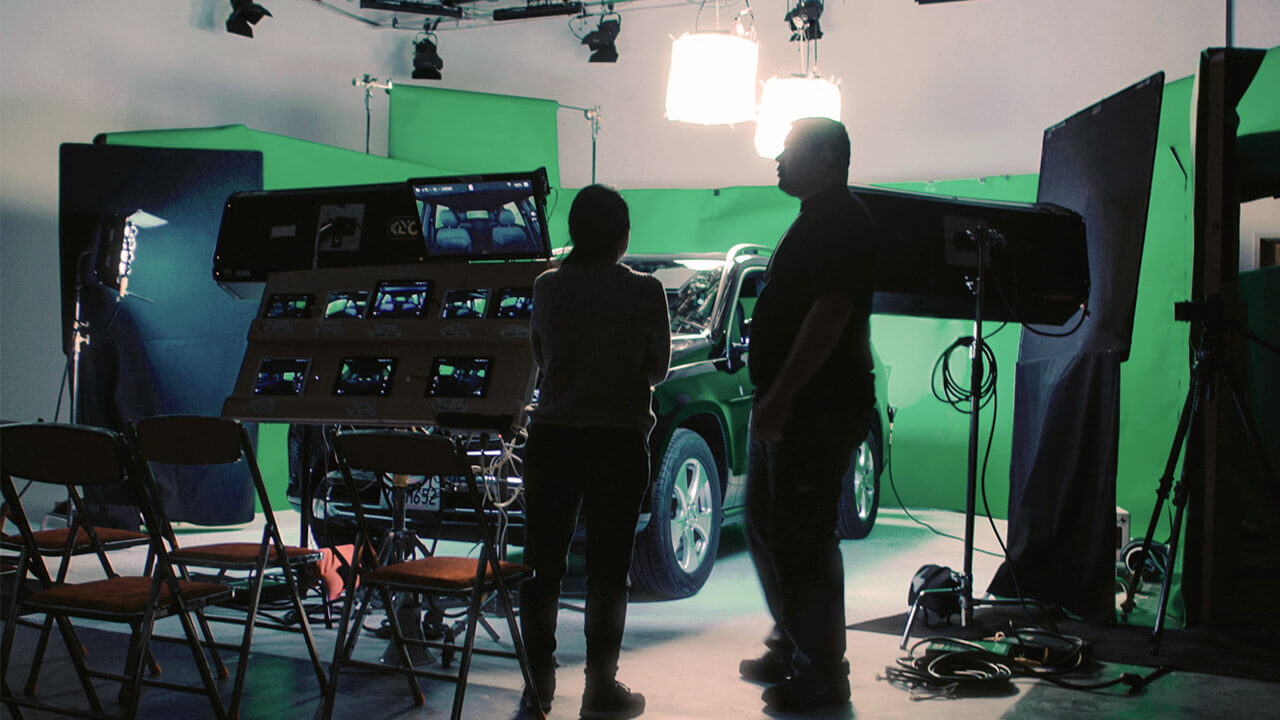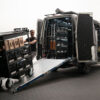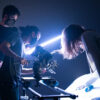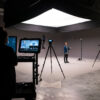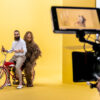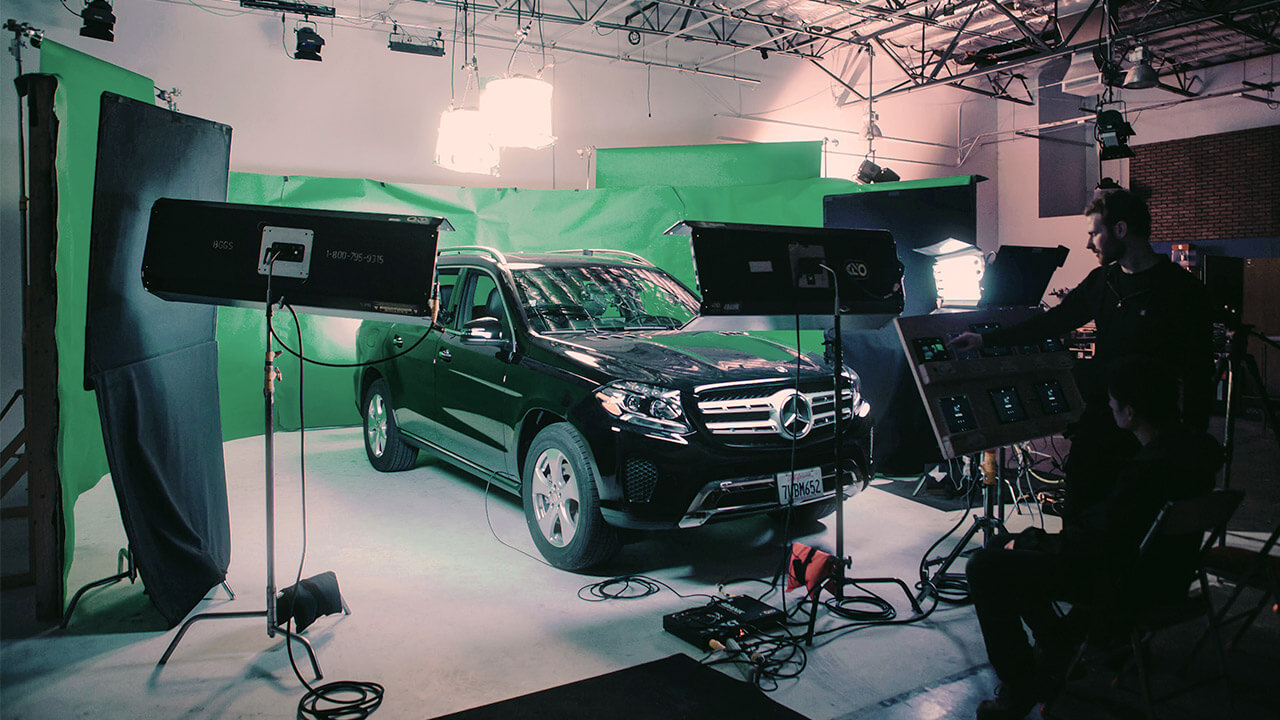
One of our strongest beliefs here at Mac House is to contribute to the creative community. We strive to be an authority in the field of video & film production. We help circulate new ideas and solutions for filmmakers. On one recent project, San Jose based creative agency Four Winds Creative approached us for insight. For the project, we provided both technical knowledge and an alternate solution.
The project we collaborated on was inspired by Carpool Karaoke, a series that follows talk show host James Corden as he picks up celebrity guests. The series’ episodes are filmed live over the course of a single ride using several dashboard-mounted cameras. To reduce the obstacles that may occur while being out in the elements, we made the decision to shoot in-house for the comfort of talent. Being under controllable conditions was a benefit, but posed several challenges. For one, we had to build a green screen to fit a vehicle. Secondly, properly lighting both the talent and the backdrop was a concern. And lastly, getting video feeds from 8 GoPro cameras seemed tedious.
The Set Build
The whole aesthetic behind Carpool Karaoke is a voyeuristic viewing experience. To recreate the look and feel, we built a horseshoe-shaped green screen backdrop. This afforded us nearly 270 degrees of coverage. This set ensured that each of the GoPro cameras had a full green screen background for compositing in post-production.
Illuminating The Horseshoe
With the backdrop built, lighting the green screen and the talent was a two-step process. It included lighting the green screen separately from the passengers in the vehicle. In the detailed diagram below you can see the lighting instruments used and their positions.
One challenge we had to resolve on our prep day was the tinted back window of the vehicle. Without any adjustments, the color of the green screen behind the window was too dark. To compensate, we set up a light outside the rear of the vehicle to intensify exposure of that area.
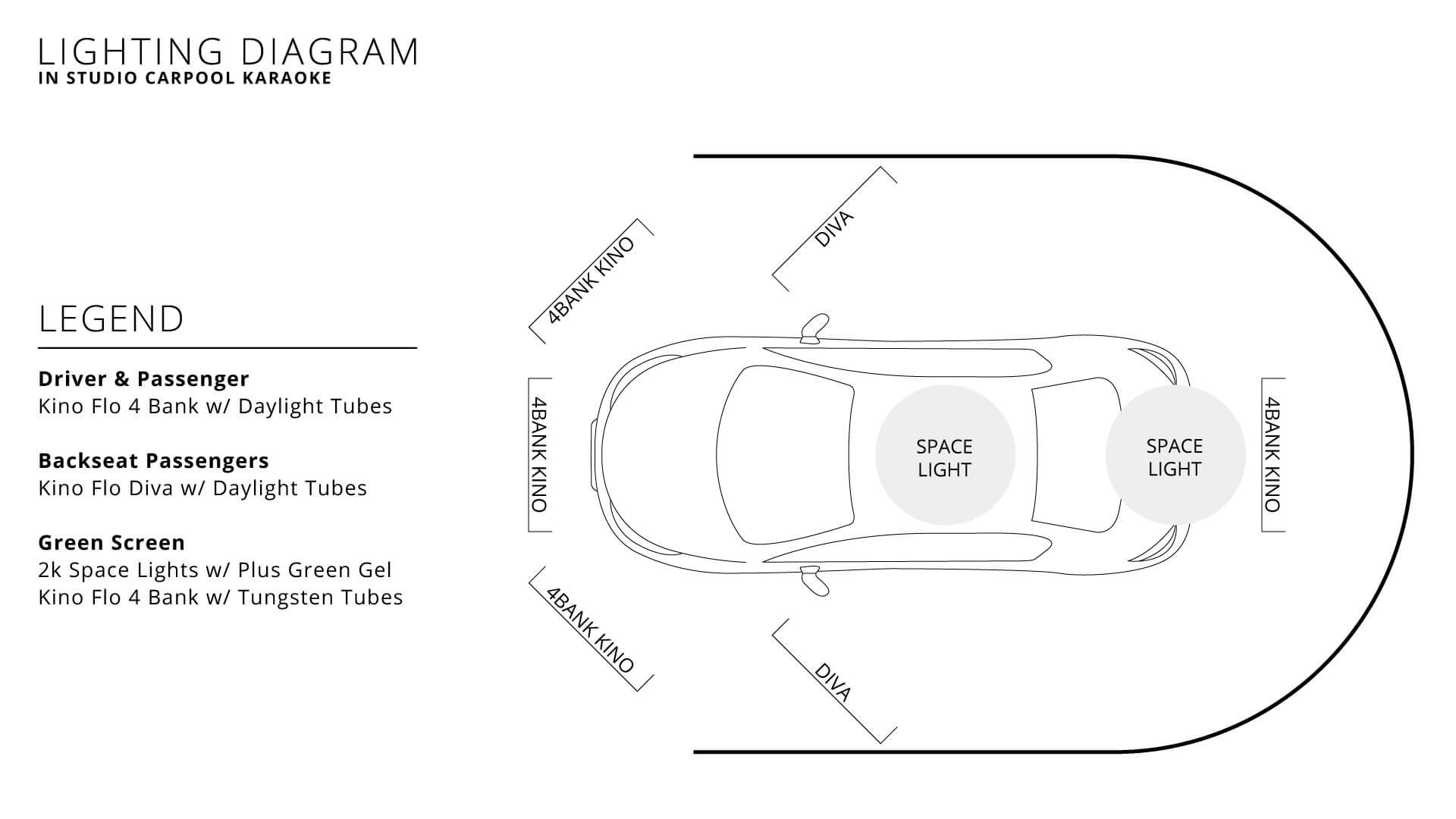
Why Color Matters
The goal for lighting green screens is to light it as evenly as possible so that when it comes to compositing the visual effects team can key out the green. The original plan was to keep all lights balanced to tungsten, but after reviewing the test footage we found that the green screen took on too much of the warm tungsten color.
The ideal solution was to introduce more contrast. We replaced all the tungsten bulbs in the Kino Flos with daylight bulbs and wrapped the space lights in plus-green gel to add more green vibrancy. The result, as depicted below, shows how the skin tones remained faithful and the green screen became more distinctive.
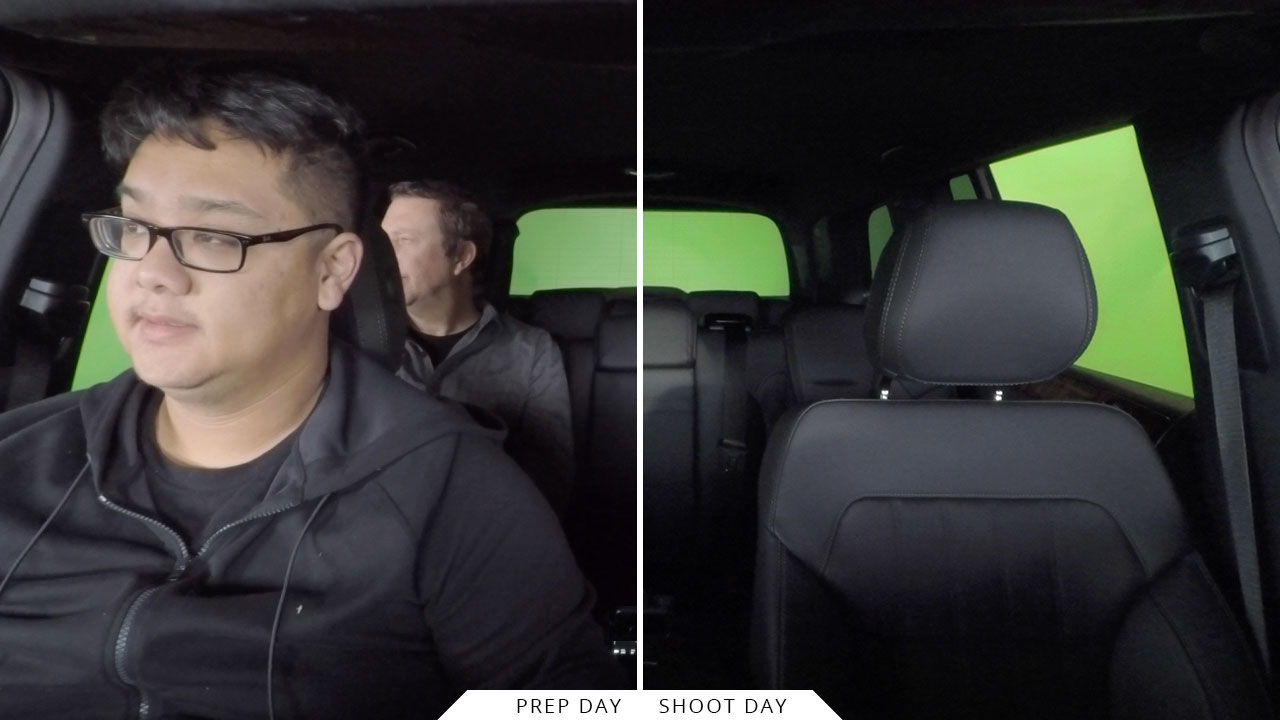
Tapping Into A Live Video Feed
The ideal method for monitoring GoPros is to use its native HDMI output. But can you imagine the river of cable and expense for 8 dedicated HDMI monitors? The alternate solution we found to keeping clutter and expense down was to utilize our studio’s Wi-Fi network to send video feeds to iPhones and iPads.
This method was not without problems. There was latency between the action and the monitor. Since the monitors were only for framing purposes, we didn’t let the issue prevent us from moving forward. We did, however, hardwire A-Cam, which was the master shot, to a 17” screen to monitor the action during the take.
Wrapping Up The Day
Regardless of the shoot, each will have challenges to overcome and creative solutions will be sought out. Video production is a community and if you feel that the extent of your technical knowledge is being tapped, reach out to the many outlets available such as No Film School and Reddit. This industry is about collaboration, the more we share this knowledge the more we’ll be able to enrich the film community.
